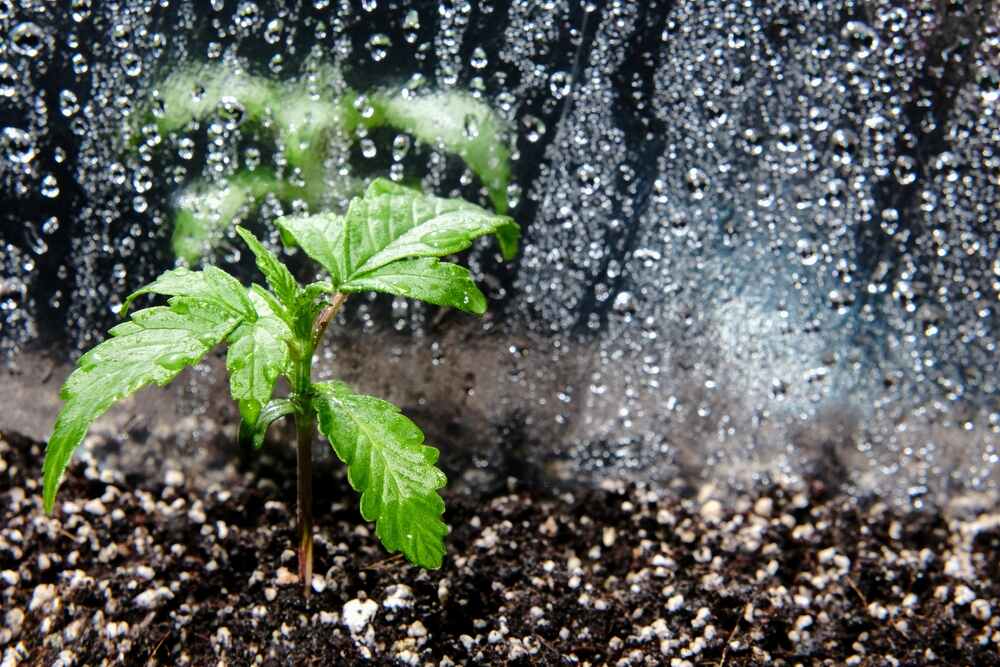
How much water should you give autoflowers?
When you’re growing autoflowers, knowing how much water to give them is crucial for healthy growth. You don’t want to drown them, but you also don’t want to leave them thirsty. It’s all about balance, and I’m going to walk you through exactly how I handle it when growing autoflowers, so you can keep your plants thriving.
Understanding autoflower watering needs
How autoflowers differ from photoperiod plants
Unlike photoperiod plants that rely on light changes, autoflowers stick to their own internal schedule. This means they don’t have as much time to recover from issues like overwatering. Because they grow faster, you need to be a bit more careful with their water intake, especially early on. They don’t like to sit in soggy soil, and you’ll want to make sure you’re watering just the right amount from the start.
The impact of growth stage on watering needs
As autoflowers grow, their watering needs change. When they’re tiny seedlings, they’re not ready for a lot of water, so you’ll need to be gentle. I usually give them a light spray or just a little bit of water right around the roots. As they move into the vegetative stage, they’ll drink more, and once they hit flowering, they’ll be even thirstier. But remember, too much water can lead to root problems, so always be on the lookout for signs they’ve had enough.
Factors that influence watering amounts
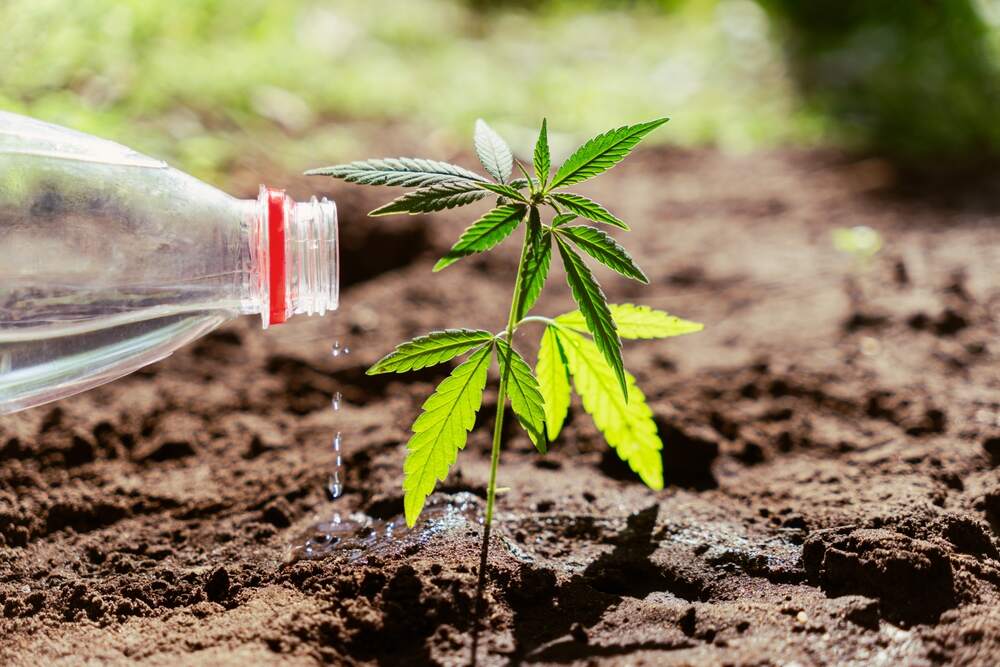
Size of the plant and root system
The bigger the plant, the more water it needs—straightforward, right? As your autoflowers grow, their roots are going to spread out, and they’ll start taking in more water. But the key here is to give them water based on their size. If you’ve got a small autoflower with a compact root system, you don’t need to flood it. Always think about how deep and wide the roots are when you’re deciding how much to water.
Type of growing medium (soil, coco coir, hydroponics)
Your growing medium is going to play a huge role in how much water your autoflowers need. If you’re growing in soil, you’ve got a bit of a buffer because soil holds moisture longer. Coco coir is quicker to dry out, so you’ll need to water your plants more often. Hydroponics is a whole different game. Since the roots are directly in water, you’re just managing the balance of nutrients and oxygen. So, always check the medium and adjust your watering routine based on how fast it dries out.
Temperature and humidity considerations
Hot and dry? Your plants are going to dry out quicker, so you’ll need to water more. Humid and cool? They won’t need as much. I always keep an eye on the weather and tweak my watering schedule. You don’t want to water on autopilot—watching the environment around your plants is key to keeping them happy.
How much water to give an autoflower in different pot sizes
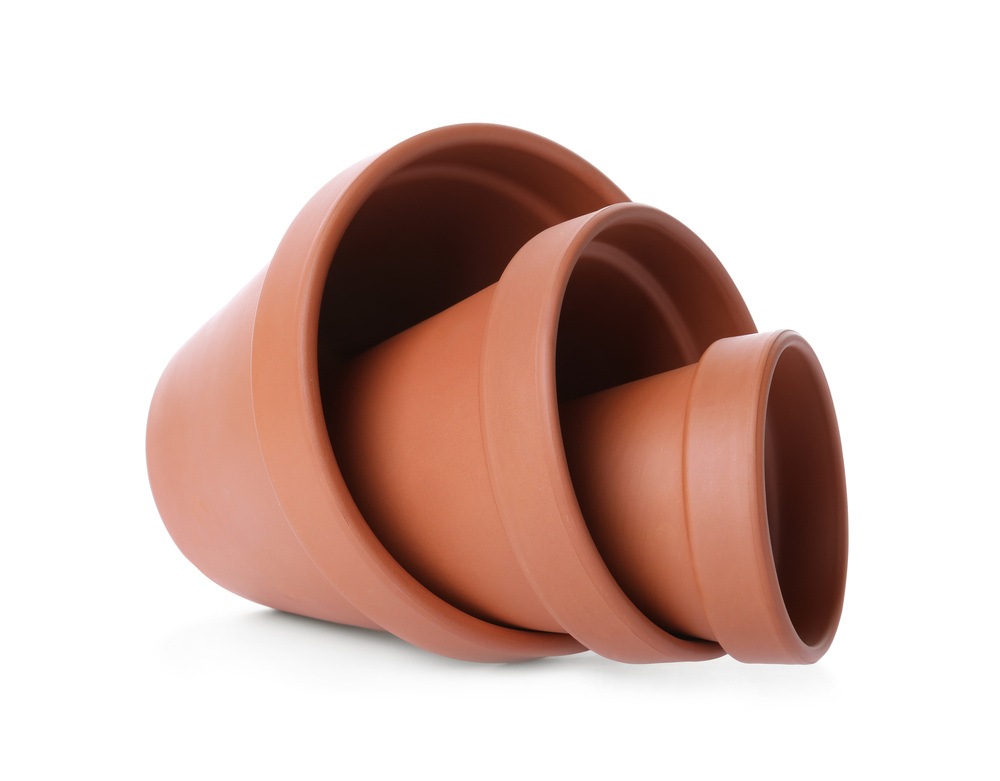
Here’s how much water they typically need in common pot sizes. These suggestions can keep your plants from feeling like they’re drowning or drying out.
3 Gallon Pot
For a 3-gallon pot, autoflowers don’t need a ton of water, but they still need a consistent routine. Generally, I recommend:
- Amount: Start with about 0.5 to 1 liter of water per session.
- Frequency: Every 2-3 days is usually a good rhythm.
- Checking for Dryness: You can check by poking a finger an inch into the soil. If it feels dry, it’s probably time for another drink.
The smaller pot means the soil will dry out faster, so keep an eye on it, especially during those hot days.
5 Gallon Pot
In a 5-gallon pot, the soil holds more moisture, which means you don’t have to water as often:
- Amount: About 1 to 1.5 liters per session should do it.
- Frequency: Every 3-4 days is usually a safe bet.
- Signs of Thirst: If you notice the leaves drooping a bit, that’s your cue they need water. Just avoid turning the soil into a mud pit – roots love oxygen too!
This setup gives your autoflower roots a little more room to stretch out, and they’ll appreciate a more stable watering schedule.
10 Gallon Pot
Going up to a 10-gallon pot? Now we’re talking about more water, but still not too much. Here’s a good approach:
- Amount: Aim for around 2 to 2.5 liters per watering.
- Frequency: Roughly every 4-5 days.
- Observation: You might notice the top of the soil dries out quicker than the bottom. Don’t just water every time it looks dry – dig down an inch or two to make sure the soil really needs it.
This larger pot lets the soil stay moist longer, meaning you can stretch the time between watering sessions without sacrificing plant health.
15 Gallon Pot
If you’re using a 15-gallon pot, you’re giving your autoflowers a palace! But with that comes the need for a bit more water and a little patience.
- Amount: 3 to 3.5 liters of water per session is a good rule of thumb.
- Frequency: About once a week or when the top couple inches of soil feel dry.
- Hydration Check: Since a large pot can stay moist deeper down, it’s smart to water slowly, allowing it to reach the roots. It’ll keep the soil structure balanced, giving roots the air and water they need.
In bigger pots, autoflowers enjoy steady hydration, and with less frequent watering, you save a bit of time.
Best Practices for watering autoflowers
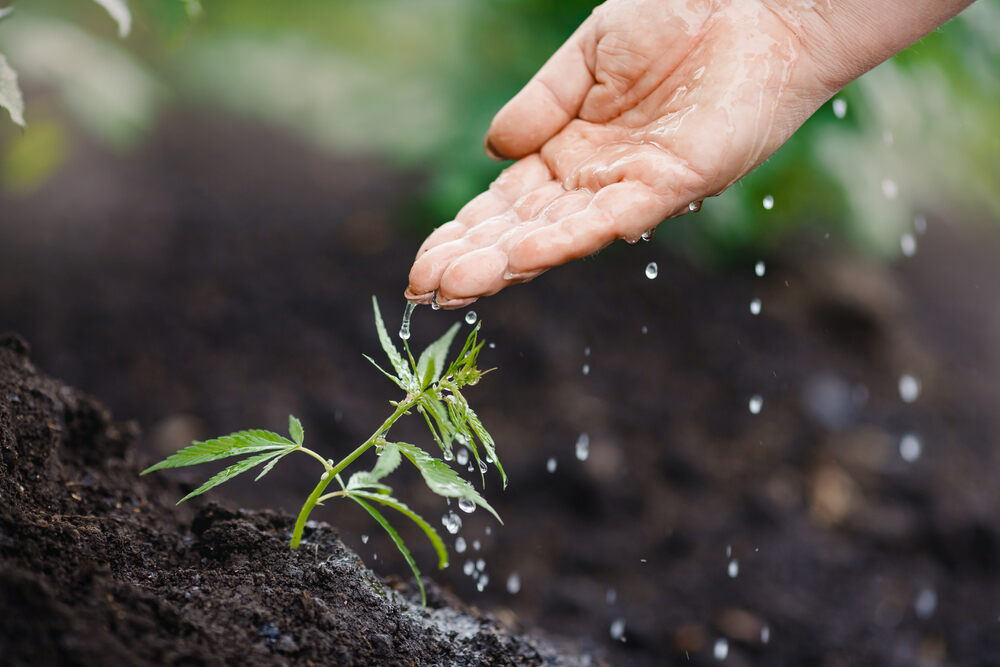
How to check soil moisture levels
Before you even think about grabbing that watering can, check your soil! The simplest way is to stick your finger about an inch into the soil. If it’s dry at that depth, it’s time to water. You can also use a moisture meter, but honestly, I like the old finger test—it’s quick and gets the job done. Plus, your plants will tell you if they’re thirsty. Droopy leaves? They might need a drink.
The importance of drainage and preventing overwatering
Here’s the deal: autoflowers hate sitting in soggy soil. If the water doesn’t drain properly, you’re setting yourself up for root rot and a bunch of other problems. Make sure your pots have plenty of drainage holes, and always let the water run through the soil and out the bottom. If you’re seeing water just sitting on top of the soil or the pots are heavy days after watering, you’re overdoing it. Cut back before it causes damage.
How to water autoflowers at different stages (seedling, vegetative, flowering)
When your autoflower is a seedling, be super careful with watering. I like to lightly spray around the base to avoid drowning the tiny roots. Once the plant hits the vegetative stage, I increase the water gradually as it grows, making sure to keep the soil evenly moist but not soaking wet. During flowering, I give it more water since the plant is working harder to produce those buds. But again, always check the soil before watering and don’t just assume it needs more.
Water quality and additives
Using pH-balanced water
Autoflowers are picky when it comes to pH. Too high or too low, and you’re going to run into nutrient issues. I always use pH-balanced water, aiming for a range of 6.0 to 7.0 in soil, or slightly lower for coco coir. It’s easy to test with a pH meter, and trust me, this little step makes a big difference in how your plants take up nutrients.
Should you use nutrients when watering autoflowers?
Yep, but less is more! Autoflowers are smaller and grow quicker, so they don’t need as many nutrients as photoperiod plants. I start with a diluted mix and work my way up if I see the plant needs it. Too much too soon can lead to nutrient burn, and no one wants that.
Tap water vs distilled vs filtered water
Tap water can be fine if you’re in an area with low chlorine levels, but I always recommend using filtered water. Distilled water is great for avoiding unwanted minerals, but you’ll need to add nutrients since it’s completely stripped down. I usually go for filtered as it’s easy and keeps things balanced without too much hassle.
Common watering mistakes and how to avoid them
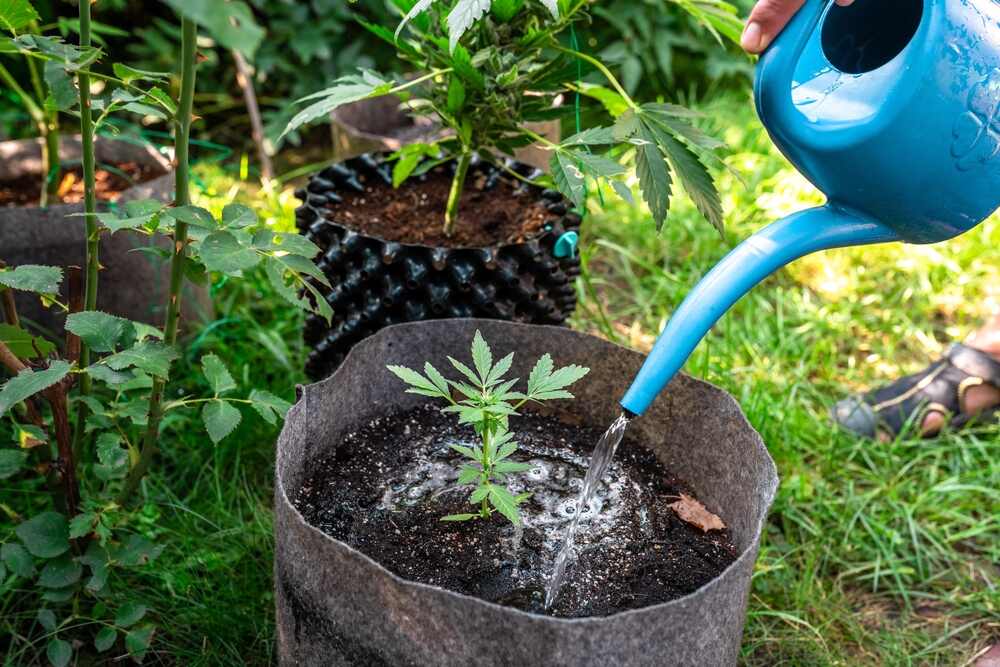
Overwatering and underwatering signs
Overwatering is probably the most common mistake. If the leaves look droopy but the soil’s still wet, you’re overdoing it. Underwatering, on the other hand, shows up as crispy or wilting leaves. The soil will be bone dry, and the plant will look sad. Just get into a routine and adjust based on how your plant looks and feels.
Solutions to fix watering mistakes
If you’ve overwatered, give the plant some time to dry out and stop watering for a few days to let the soil breathe. You might also need to add more perlite or another drainage material to your soil mix. For underwatering, it’s simple: give your plant a good drink and try to be more consistent going forward.
FAQs:
How often should I water autoflowers?
Water when the top inch of soil is dry, typically every 2-3 days depending on your environment.
What is the best time of day to water autoflowers?
Water in the morning to allow the plant to absorb moisture during the day.
Can you overwater autoflowers?
Yes, overwatering leads to root rot and droopy leaves. Ensure proper drainage and water only when the soil is dry.
Should I water autoflowers differently in different grow mediums?
Yes, soil holds water longer, while coco coir dries faster. Adjust watering frequency based on the medium’s water retention.
How much water should I give during the flowering stage?
Increase water during flowering as plants are using more energy, but still check the soil moisture before watering.
Watering autoflowers isn’t rocket science, but it does require attention. By understanding their specific needs and adjusting based on factors like growth stage and environment, you’ll keep your plants happy and growing strong. Remember, it’s all about balance—so stay patient, watch your plants, and you’ll get the hang of it in no time!
